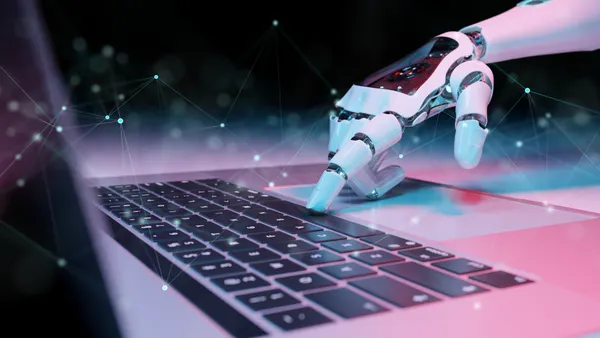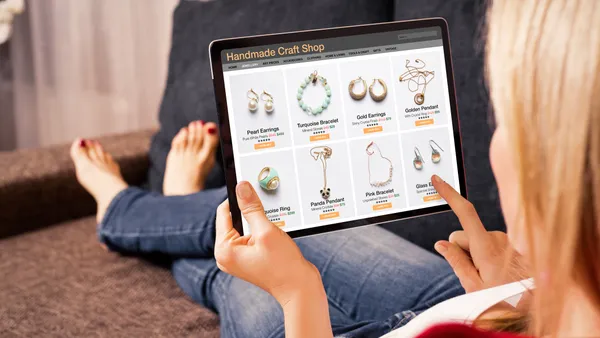It's no secret that bricks-and-mortar stores are locked in battle with online retailers for the hearts and minds of consumers worldwide. In order to bring consumers back through their doors, physical retailers have had to think outside of the box and rethink their approaches to convenience, marketing and providing a personalized experience.
Here are 10 recent innovations physical retailers should be aware of.
1. PINHOLE CAMERAS IN MANNEQUINS AND DISPLAYS
Cameras don’t just spy on would-be shoplifters anymore. Recently, high-profile clothing chains have begun utilizing mannequins with pinhole cameras capable of capturing valuable consumer data. One such camera, Italian mannequin maker Almax’s EyeSee, utilizes face-recognition software that can identify a shopper’s age, gender and race. One clothing store was reportedly able to determine that children made up 50% of its afternoon visitors and adjust its merchandise accordingly. In-store video advertising monitors have also become a hiding place for these cameras, some of which can even measure responses to various stimuli.
2. RFID TAGS
Video monitors in stores can also utilize radio frequency identification merchandise tags to target you with advertising based on the items you’re carrying around. Former J.C. Penney CEO Ron Johnson announced in July 2012 his intention to have the department store become the first to use RFID tags on all merchandise. An Accenture survey in January of that year reported that half of U.S. retailers were using the tags—which were adopted by Wal-Mart's distribution centers as early as 2004—and that most retailers would implement them in five years if the adoption rate remained steady.
3. CUSTOMER LOYALTY APPS AND PROGRAMS
Customer loyalty apps like Shopkick are among tools being utilized by physical retailers to reestablish a personalized shopping experience with consumers. Shopkick, for example, gives shoppers points for entering a store and delivers information to them as they browse. Additionally, loyalty programs—like privately held supermarket chain Raley’s Family of Fine Stores’ “Something Extra”—reward customers with exclusive access to new products when they share opinions and recommendations for other products.
4. INTERACTIVE DISPLAYS
There are a number of ways in-store displays are being utilized to enhance physical stores. A good interactive window display—like the one at a LEGO Store in Chicago using a Kinect to turn people in front of it into a video game character—can turn passersby into customers. They can be used to turn entire store walls into information hubs where anything a customer wants to know about a product is available, including items that are available but not currently in stock. Furthermore, they can be used to create kiosks like Macy’s Beauty Spot where shoppers can receive virtual cosmetics recommendations based on their skin tones, and other displays that allow a customer to get a “virtual” test of how an item or accessory would look on them.
5. CROWDSOURCED DELIVERY
Earlier this year, Wal-Mart announced its intention to develop a “next-generation fulfillment network,” streamlining its global e-commerce platform in several countries and piloting a same-day delivery service. The company is also reportedly considering a “crowdsourced” delivery plan that may figure into this same-day model. Under that plan, customers would deliver packages to online buyers—a process that may likely face legal, regulatory and privacy challenges before/if it becomes a reality. In any event, 25 of the retail giant’s stores already deliver online orders directly via FedEx and its own trucks.
6. MOBILE POS PROLIFERATION
Mobile POS isn’t exactly new—it’s been around in Apple stores for several years now—but it’s starting to catch on with a larger number of retailers. Further demonstrating the appeal of completing transactions from anywhere in a store, Unicomer Group signed a deal with Starmount in March bringing the technology to its 10 store brands across Central America, the Caribbean, Ecuador and the U.S. The technology doesn’t just improve customer convenience, though, as it better prepares associates with detailed product information at their fingertips. Additionally, this is another area where RFID tagging becomes advantageous, given the number of mobile POS solutions that utilize the tags and can even allow customers to pay using RFID units in their smartphones.
7. BEYOND MOBILE POS
At least one app is expanding on the convenience of mobile POS by trying to eliminate the unloading and reloading of shopping carts. Swift Shopper, a free app by ezCommerce Solutions that can be upgraded for $1.99, reads every barcode in every store. The idea is that customers scan items as they go and then the cashier scans the codes directly from the phone at checkout, saving everyone time. Retailers don’t even have to invest in new hardware because shoppers are using their own phones.
8. DIGITAL MARKETING SERVICES
“Showrooming,” the act of a customer checking out a product in a physical location before finding a lower price online, has become something of an obstacle for brick-and-mortar retailers. Thanks to the mobile wallet space and the launch of location-based marketing services like Apple Passbook and Google Wallet, however, retailers now have a little more leverage. Passbook gives users “Passes” and alerts them when they’re near a location where they can use them, while Google Wallet will let users save things like loyalty cards, offers, tickets and boarding passes in their virtual wallet. Some stores, like Target, have also taken a low-tech approach and launched plans to price-match online competition.
9. HOINTER'S ROBOT-OPERATED CLOTHING STORE
Located in Seattle’s University District and founded by a former Amazon executive, men’s apparel store Hointer is operated mostly by robots. Capitalizing on the fact that most men see shopping as an inconvenience, the store has customers use their smartphones to scan QR codes on jeans they like, summoning a robot to send the specified size to a dressing room. This eliminates the need to dig through piles of clothing and also requires less floor space and fewer salespeople. The company plans to eventually expand into women’s and teen’s clothing, as well.
10. ECOMMERCE COMES OFFLINE
You didn’t think online retailers would sit back and let bricks-and-mortar have all the fun, did you? Some online retailers are going omnichannel with their own small retail locations. Online men’s retailer Bonobos has opened “Guideshops” in America, and German online fashion store Zalando has done the same in Berlin. Amazon is also offering lockers in some shopping malls where customers can pick up deliveries. This approach is mostly beneficial for return-prone products most consumers still prefer to experience in-store, like clothing or baby equipment, or for large products with high shipping costs. Still, it’s an interesting development to say the least.
Would you like to see more retail news like this in your inbox on a daily basis? Subscribe to our Retail Dive email newsletter! You may also want to read Retail Dive's look at 10 retail analysts and firms you need to follow on Twitter.














